Super Smash Bros. is a crossover fighting game series published by Nintendo. The series was created by Masahiro Sakurai, who has directed every game in the series. The series is known for its unique gameplay objective which differs from that of traditional fighters, in that the aim is to increase damage counters and knock opponents off the stage instead of depleting life bars.
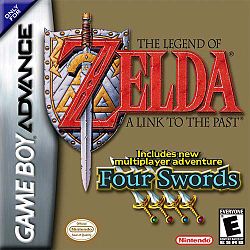
The Legend of Zelda: A Link to the Past and Four Swords is a compilation of two action-adventure games co-developed by Nintendo EAD and Capcom and published by Nintendo for the Game Boy Advance. The game was released in December 2002 in North America and in March 2003 in Japan and Europe. The cartridge contains a modified port of A Link to the Past, originally released for the Super Nintendo Entertainment System in 1991, and an original multiplayer-only game titled Four Swords, which serves as the 9th installment in The Legend of Zelda series.
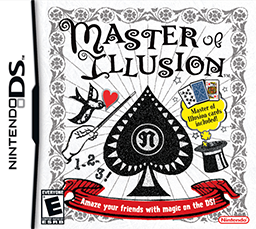
Master of Illusion, known in Europe as Magic Made Fun: Perform Tricks That Will Amaze Your Friends! and in Japan as Magic Encyclopedia, is a magician video game for the Nintendo DS. It was developed by Tenyo and Eighting and published by Nintendo, released in Japan on November 16, 2006, November 26, 2007 in North America and March 14, 2008 in Europe. Around 9 of its magic tricks were released as separate pieces of DSiWare.

Uno is a video game based on the card game of the same name. It has been released for a number of platforms. The Xbox 360 version by Carbonated Games and Microsoft Game Studios was released on May 9, 2006, as a digital download via Xbox Live Arcade. A version for iPhone OS and iPod devices was released in 2008 by Gameloft. Gameloft released the PlayStation 3 version on October 1, 2009, and also released a version for WiiWare, Nintendo DSi via DSiWare, and PlayStation Portable. An updated version developed by Ubisoft Chengdu and published by Ubisoft was released for the PlayStation 4 and Xbox One in August 2016, the Microsoft Windows in December 2016 and for the Nintendo Switch in November 2017.

The Nintendo DSi is a dual-screen handheld game console released by Nintendo. The console launched in Japan on November 1, 2008, and worldwide beginning in April 2009. It is the third iteration of the Nintendo DS, and its primary market rival was Sony's PlayStation Portable (PSP). The fourth iteration, entitled Nintendo DSi XL, is a larger model that launched in Japan on November 21, 2009, and worldwide beginning in March 2010. Development of the DSi began in late 2006, and the handheld was unveiled during an October 2008 Nintendo conference in Tokyo. Consumer demand convinced Nintendo to produce a slimmer handheld with larger screens than the DS Lite. Consequently, Nintendo removed the Game Boy Advance (GBA) cartridge slot to improve portability without sacrificing durability.

Animal Boxing is a sports video game developed by Spanish studio Akaoni Studio for the Nintendo DS.
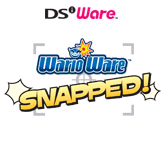
WarioWare: Snapped! is a minigame compilation party video game developed by Nintendo SPD Group No.1 and Intelligent Systems and published by Nintendo for the Nintendo DSi's DSiWare digital distribution service, and is part of the WarioWare series of video games. It is the sixth game in the series.

Brain Age Express are three educational puzzle video games developed by Nintendo for the Nintendo DSi's DSiWare download service. They are the third series of games in the Brain Age series, and are repackaged versions of both Brain Age: Train Your Brain in Minutes a Day! and Brain Age 2: More Training in Minutes a Day! games, featuring both old and new puzzles.

Sujin Taisen: Number Battles, known in North America as Number Battle, is a puzzle/strategy video game developed by Mitchell Corporation for the Nintendo DS handheld video game console. By the end of 2007, Sujin Taisen sold 21,996 copies.
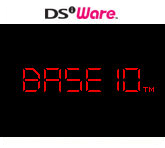
Code, known as Base 10 in North America and Decode in Japan, is a puzzle video game developed by Skip Ltd. and published by Nintendo for the Nintendo DSi's DSiWare digital distribution service.

Boxlife, known as Hacolife in Japan, is a puzzle video game developed by Skip Ltd. and published by Nintendo for the Nintendo DSi's DSiWare digital distribution service.

Mighty Flip Champs! is a puzzle-platform game, developed and published by WayForward Technologies for the Nintendo DSi's DSiWare digital download service. It was first announced on March 9, 2009, and was released on June 1, 2009, in North America and on November 27, 2009, in the PAL regions. The developers took inspiration from multiple sources, including the video games Wendy: Every Witch Way and The Legend of Zelda: A Link to the Past. In it, players control Alta, a girl who has to reach a fishman by flipping between areas until she can reach him. Since its release, Mighty Flip Champs! received all-around positive reception, while also being called one of the best video games for the DSiWare service. It is the first game in the Mighty series, and is followed by Mighty Milky Way, Mighty Switch Force! and Mighty Switch Force! 2.

Dragon Quest Wars is a 2009 turn-based strategy video game developed by Intelligent Systems and published by Square Enix for the Nintendo DSi via its DSiWare download service. It is part of the Dragon Quest series and supports up to three other players in multiplayer.

The Nintendo DSi system software is a set of updatable firmware versions, and a software frontend on the Nintendo DSi video game console. Updates, which are downloaded via the system's Internet connection, allow Nintendo to add and remove features and software. All updates also include all changes from previous updates.

Pop Island – Paperfield is a Nintendo DSi video game by French developer ODENIS Studio. It is the sequel to Pop Island. When the game was still available for purchase, it cost 200 Nintendo points, and could be downloaded at the DSi Shop. Pop Island – Paperfield is a capture the flag type game. The player's objective is to bring as many flags to their base as possible in a set amount of time, while trying to stop the opposing team from bringing flags to their base. The characters of Pop Island consist of 12 different animals and vehicles, such as a lion with wheels, surfing penguin, a fish, a skateboarding elephant and many others.

Art Academy, also known as Art Academy: Learn painting and drawing techniques with step-by-step training in the PAL regions and Artistic Taste Classroom DS in Japan, is an art training software for the Nintendo DS. It was developed by Headstrong Games and published by Nintendo. Art Academy was originally a two-part training application only available for download via the DSiWare service since 2009. It was later re-released in 2010 as a fully compiled, retail-able DS Game Card with added features, thus also making it available for original Nintendo DS and Nintendo DS Lite users.
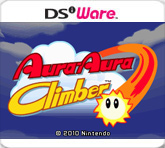
Aura-Aura Climber is an arcade action video game developed and published by Nintendo for the Nintendo DSi's DSiWare digital download service. It was released on February 22, 2010.
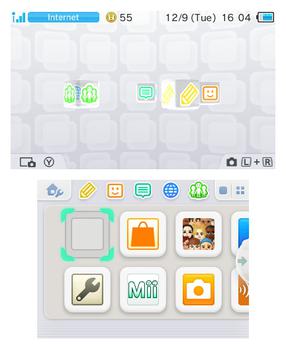
The Nintendo 3DS system software is the updatable operating system used by the Nintendo 3DS handheld system. The Nintendo Switch system software is believed to have evolved from the Nintendo 3DS system software.
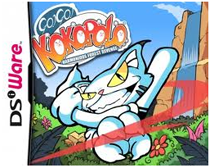
Go! Go! Kokopolo – Harmonious Forest Revenge is an action puzzle platform video game developed and published by Tanukii Studios Limited for the Nintendo DSi's DSiWare digital distribution service. It was first announced in October 2008 as a title under development for the Nintendo DS, in a series of Developers Diaries in the UK video game magazine NGamer. It was eventually released on the DSiWare service on August 4, 2011 in the PAL region, August 11, 2011 in North America, and May 30, 2012 in Japan. The game was removed on August 31, 2014.
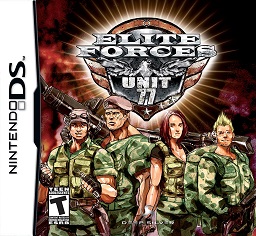
Elite Forces: Unit 77 is an action video game developed by Spanish studio Abylight and Gammick Entertainment for the Nintendo DS and DSiWare.



















